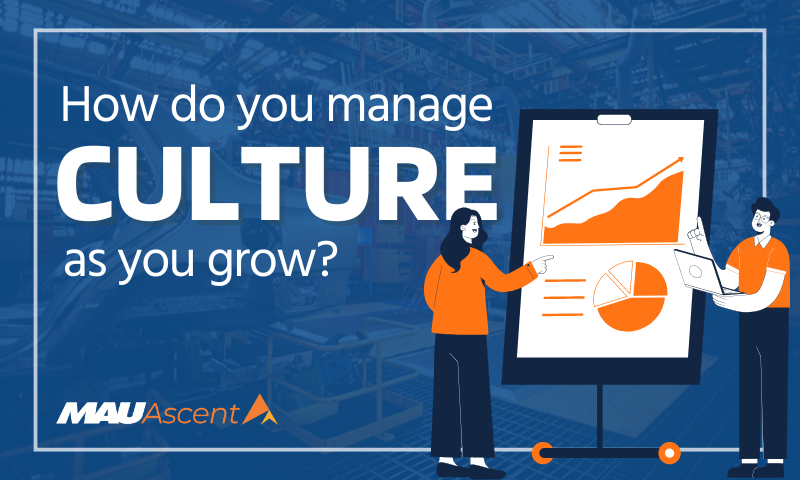Creating a healthy culture in the manufacturing industry is more important than ever. With the emergence of a blended workforce model, manufacturing managers, HR professionals, and plant managers face new opportunities and challenges. This blog post will explore the concept of a blended manufacturing workforce and provide practical insights into fostering a positive workplace culture that promotes business growth.
The Changing Landscape of Manufacturing Talent Acquisition
The manufacturing landscape is undergoing a revolutionary transformation, marked by the emergence of Industry 4.0 — the blending of digital technologies with traditional manufacturing processes. This transformation is not only altering the nature of manufacturing work but also reshaping the profiles of roles required within the sector.
However, the shift towards more automated processes presents significant challenges in talent acquisition. Companies are struggling to attract and retain individuals equipped with the necessary skills to thrive in an Industry 4.0 landscape. The rapid pace of technological advancements has outpaced the skill levels of the current workforce, creating a skills gap that poses a risk to businesses aiming to maximize the potential of these new technologies.
To overcome these challenges, companies should focus on upskilling their existing workforce through continuous learning opportunities. By investing in employee development and training programs, businesses can bridge the skills gap internally. Additionally, forming partnerships with educational institutions to align curricula with industry needs can ensure a pipeline of skilled graduates. These strategic collaborations, including internships and apprenticeship programs, provide practical experience and prepare students to meet the demands of the evolving manufacturing industry.
Understanding the Blended Workforce
What is a Blended Workforce in Manufacturing?
A blended workforce in manufacturing combines full-time employees, part-time staff, temporary workers, and contractors. This model allows companies to adapt to fluctuating production demands and leverage a diverse range of skills. By incorporating different types of workers, manufacturers can create a flexible and dynamic work environment.
Advantages of Incorporating a Blended Workforce Model
One key advantage of a blended workforce is flexibility. Manufacturers can quickly scale up or down based on production needs, ensuring they meet market demands without overcommitting resources. Additionally, this model allows businesses to tap into specialized skills that may not be available in the existing workforce. This diversity can lead to increased innovation and improved problem-solving capabilities.
Challenges of a Blended Workforce
The primary challenge of a blended workforce is maintaining consistent communication and collaboration. Temporary and contract workers may feel disconnected from full-time staff, leading to potential misunderstandings and decreased productivity. To mitigate this, companies must implement strategies to promote inclusivity and ensure that all workers feel valued and heard.
Another challenge is integrating temporary and contract workers into the company culture. This requires intentional efforts to make these workers feel like part of the team, even if their tenure is short. Providing them with the same onboarding and training opportunities as full-time employees can help bridge this gap and foster a sense of belonging.
Creating a Healthy Work Culture While Experiencing Business Growth
A healthy workplace culture is essential for business growth. It promotes employee satisfaction, reduces turnover, and enhances productivity. In a manufacturing setting, this translates to more efficient production processes, higher-quality products, and improved safety records. By prioritizing a positive work environment, companies can achieve sustainable growth and long-term success.
To create a healthy work culture, manufacturing managers should focus on clear communication, recognition, and continuous improvement. Regular team meetings, transparent communication channels, and open-door policies can help ensure that all employees feel informed and valued. Recognizing and rewarding employees for their hard work and contributions fosters a sense of appreciation and motivation.
Additionally, encouraging a culture of continuous improvement empowers employees to identify areas for enhancement and contribute to the company’s success. Providing opportunities for professional development and training shows a commitment to employee growth and can lead to increased loyalty and satisfaction.
While business growth is essential, it should not come at the expense of employee well-being. Balancing the two requires a thoughtful approach to workforce management. This includes regularly assessing workloads, providing adequate resources, and ensuring that employees have access to support systems. By prioritizing employee well-being, companies can create a sustainable growth environment.
Overcoming Common Challenges
Addressing Resistance to Change
Change can be unsettling, especially in a manufacturing environment where routines and processes are well-established. To address resistance to change, companies should involve employees in the decision-making process and clearly communicate the benefits of new initiatives. Providing training and support during the transition period can also help ease concerns and build confidence in the new systems.
Navigating Regulatory and Compliance Issues
Manufacturing companies must adhere to various regulations and compliance standards. Managing a blended workforce adds complexity to this task. Companies should stay informed about relevant laws and regulations and implement robust compliance management systems. Regular audits and continuous monitoring can help ensure that the company remains compliant while minimizing risks.
Fostering a Unified Company Identity
When full-time employees, part-time staff, and temporary workers share the same environment, it can lead to different levels of engagement and commitment to the company’s vision and values. This disparity may create a sense of fragmentation, where some employees feel more connected than others. To address this, manufacturing leaders should promote shared values and mission statements that resonate with all employees, regardless of their status. Implementing team-building activities, inclusive communication, and cross-functional collaboration can help bridge gaps and foster a cohesive, healthy culture that encourages all workers to contribute to the company’s long-term success.
Creating a healthy culture within a blended manufacturing workforce is essential for business growth and success. By understanding the advantages and challenges of a blended workforce, leveraging digital tools and automation, and addressing common challenges, manufacturing managers, HR professionals, and plant managers can foster a positive work environment. Implementing these strategies will lead to a more engaged, satisfied, and productive workforce, ultimately driving the company’s growth and competitiveness.
If you’re ready to elevate your workplace culture, explore MAU Ascent’s workforce management solutions tailored to your needs. By investing in the right tools and strategies, including insights from “The HR and Recruitment Breakup” digital guidebook, you can unlock the full potential of your blended workforce and achieve sustainable success.






